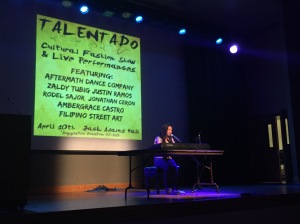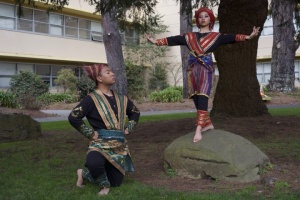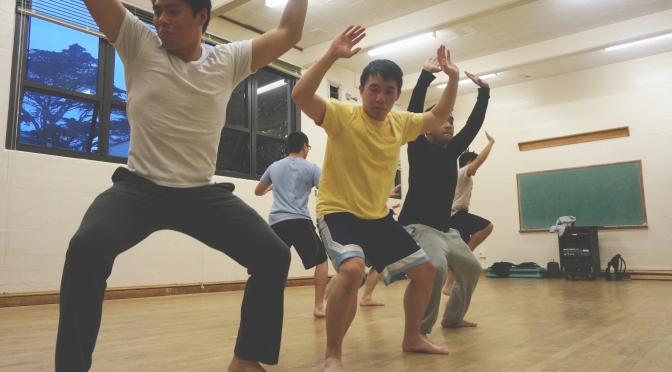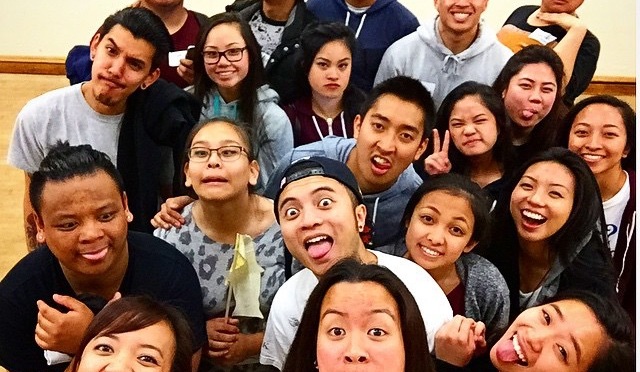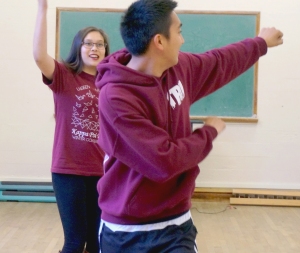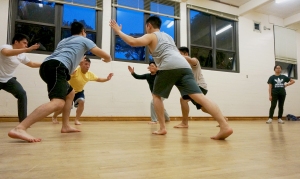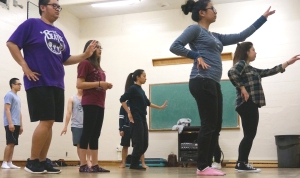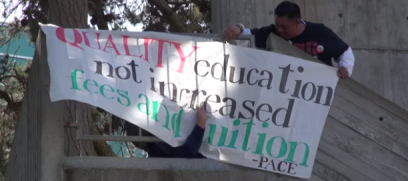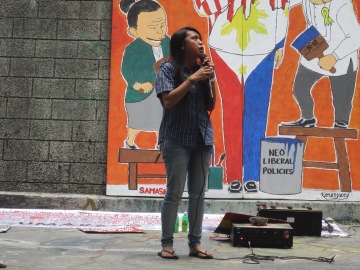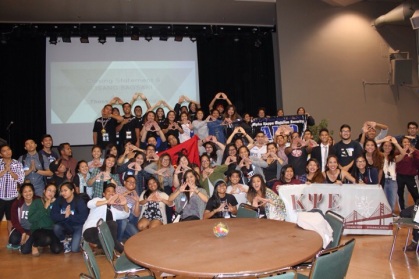By Samantha Susa
 My involvement with PACE began almost immediately when I came to SFSU as a freshman in Fall 2013. I joined Friendship Games after meeting Michelle Phung and Jacqueline Ip tabling for it at the PACE Open House that fall and participated in all aspects of FG from SPUF to games and Roll Call. I also signed up for internship that fall but was rejected because my schedule was too packed. I participated in the KAP program that fall and picked up an ate, Tawnee Vallar. I was also involved in that year’s PCN production Para Sa Aming Lahat as a dancer for modern, contemporary, and one dance from the Lumad suite Blit Bla’an. The summer of 2014 I interviewed for a position on the following year’s PCN Inner Sanctum and was able to become one of the dance supervisors. I participated in one Maria Clara dance, Jota Intramurena, and two rural dances Bulaklakan and Subli. I also interviewed to be on board for the following Friendship Games’ season and became treasurer. I balanced this position while once again participating in games and SPUF. That fall I was able to get into the internship program for PACE and became a member of STRIVE. I also participated in the KAP program again and became an ate for three adings: Nikki Damian, Ryan Yap, and Richelle Ochoa.
My involvement with PACE began almost immediately when I came to SFSU as a freshman in Fall 2013. I joined Friendship Games after meeting Michelle Phung and Jacqueline Ip tabling for it at the PACE Open House that fall and participated in all aspects of FG from SPUF to games and Roll Call. I also signed up for internship that fall but was rejected because my schedule was too packed. I participated in the KAP program that fall and picked up an ate, Tawnee Vallar. I was also involved in that year’s PCN production Para Sa Aming Lahat as a dancer for modern, contemporary, and one dance from the Lumad suite Blit Bla’an. The summer of 2014 I interviewed for a position on the following year’s PCN Inner Sanctum and was able to become one of the dance supervisors. I participated in one Maria Clara dance, Jota Intramurena, and two rural dances Bulaklakan and Subli. I also interviewed to be on board for the following Friendship Games’ season and became treasurer. I balanced this position while once again participating in games and SPUF. That fall I was able to get into the internship program for PACE and became a member of STRIVE. I also participated in the KAP program again and became an ate for three adings: Nikki Damian, Ryan Yap, and Richelle Ochoa.
I believe that PACE is capable of so much and with many passionate individuals existing within this organization and new members that are eager and open to learning I feel that we these aspects and not only teach them about their own culture and relevant education as a student but be able to connect them to other organizations within our school as well as outside organizations to be more involved within their community with the knowledge that they learn. Alongside these goals as coordinator, more specifically as Kaisahan Coordinator I would help build relationships with point people from certain organizations that are catered to help youth express their passion for the arts such as Bindlestiff Studio. The arts are such a necessary outlet to all students and its’ thanks to it that students have the space and opportunity to express their talents and tell the world who they are through whatever medium it may be. Every individual has a connection to the arts and thus every individual can express their artistic passion in different ways that are significant to themselves such as music, dance, spoken word, painting, writing and the list goes on and on. These passions run deep within individuals and at the end of the day become the only things that keep us sane and satisfied. When all other aspects of our lives become hectic such as school and personal issues, the arts are what gives us relief and a safe haven. As the Kaisahan coordinator I would aim to present different opportunities for PACE members to express their passion through different forms of art. I want to be able to reshape and build upon existing programs such as Pilharmonix, Rebels for a Cause, Sayawan, and Kaisahan Balita in order to strengthen the way each program is structured to provide a more organized and cohesive space for individuals with certain talents to be able to have an outlet for themselves. As a result of these programs different events would be hosted tohelp them utilize what they’ve learned and provide a space for them to express that and these events could range from anything like an open mic, a talent show, a dance showcase, or even simply giving exposure to visual artists such as painters and graffiti artists.
And it wouldn’t end there. Artwork is boundless and with that I wouldn’t want to restrict their passions to aspects just within PACE. I would give them the resources and opportunities to take what they learned and worked on within PACE and bring it out into our community with outside organizations such as Bindlestiff and the FCC where they would be able to expand their horizons and meet new people to help them grow more within their talents and find different ways of utilizing them to do more for themselves and their community members. and not only outside organizations but also organizations within the school as well since it is important to build and strengthen relationships with our fellow students. With PACE I feel very grateful for what it has given me but I feel that there is so much more that I can do outside of PACE with what I’ve learned and with the passion I’ve gained. Because of this I want members of PACE and outside individuals to know that I’m here to connect them through different forms of art, to help each other grow, and to build relationships in order to strengthen our sense of self identity and community.





